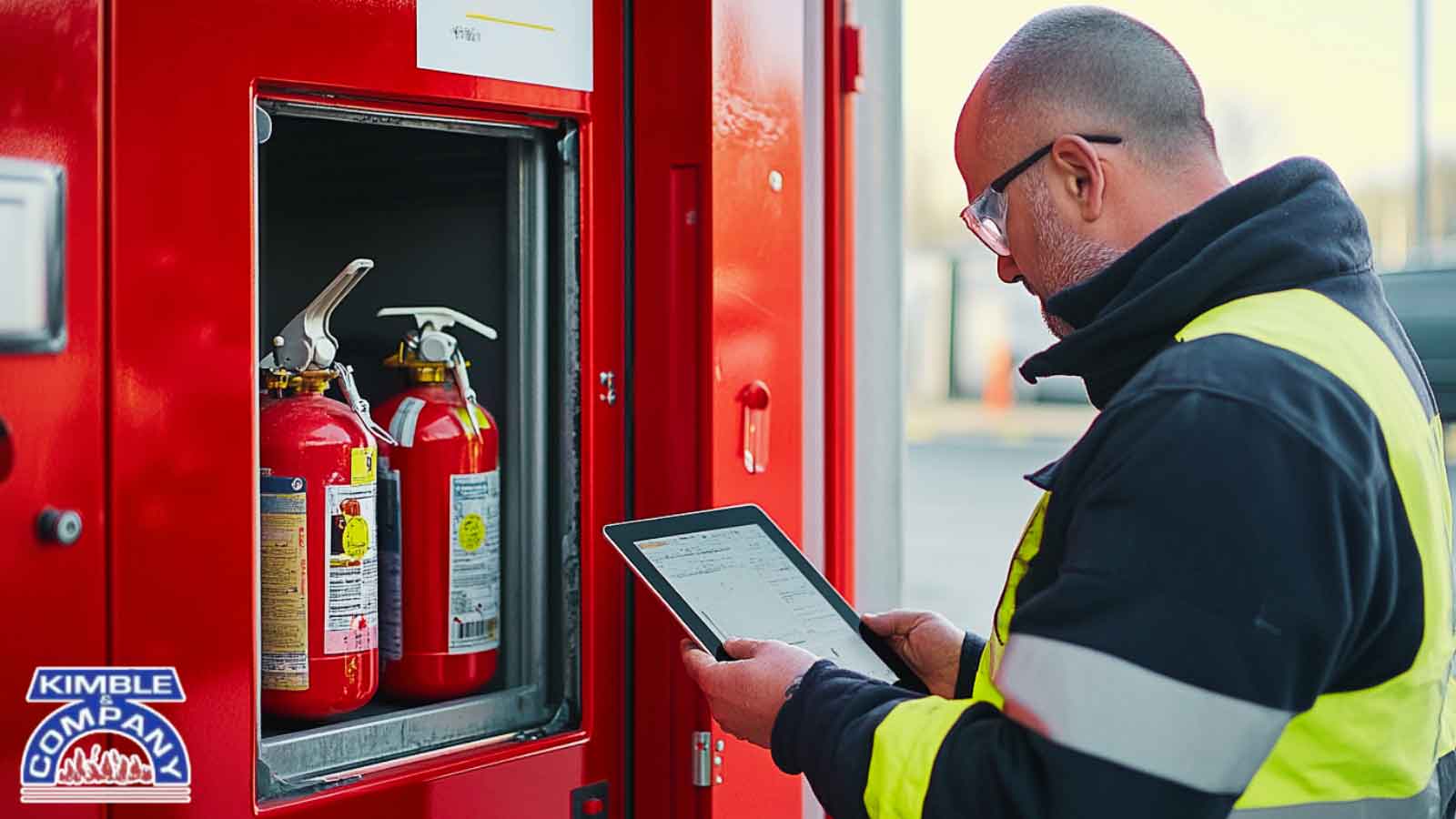Annual fire inspections in Los Angeles aren’t just procedural but crucial for safeguarding people and properties against unforeseen hazards. Failure to comply often leads to fines, operational disruptions, or legal consequences.
Being proactive about official inspections keeps your building secure and prevents last-minute scrambling. By following key regulations, documenting properly, and relying on qualified experts, you can stay ahead of potential issues and maintain consistent safety standards.
Overview of Fire Inspection Requirements in Los Angeles
Local codes and safety laws exist to protect everyone in your building. In Los Angeles, inspectors want to see that fire safety measures are regularly maintained, functional, and ready for emergencies.
Meeting these expectations allows you to avoid penalties and assures occupants that you’re taking responsible steps toward their well-being. Knowing what authorities expect, plus how and when they inspect, is your first step to confident compliance.
An intense fire safety plan typically includes routine checks of alarms, sprinklers, and exit routes. If you’re well-informed about deadlines and keep essential paperwork updated, you’ll have fewer surprises when inspectors arrive. Below, we’ll look at the primary regulations, authorities involved, and the standard schedules for annual inspections.
Essential Regulations and Authorities
Los Angeles enforces specific fire codes to reduce the risk of structural fires and ensure public safety. The Los Angeles Fire Department (LAFD) sets guidelines on equipment upkeep, structural requirements, and staff training.
These regulations often call for fire alarm inspection logs, functional exit lighting, and up-to-date fire sprinkler system components. They also emphasize backflow testing to protect your water supply from contamination, which is especially vital in buildings that use water-based sprinkler solutions.
Authorities inspect your site to confirm that these precautions aren’t just on paper. They’ll check that exits are unobstructed, alarms are operational, and sprinklers have no visible defects.
If any of these elements fall short, citations can follow. Keeping a solid partnership with fire protection contractors who understand code requirements and can help you adjust your safety measures as regulations evolve is wise.
Common Compliance Deadlines and Schedules
Most properties, from office buildings to retail spaces, face annual inspection deadlines. The LAFD usually provides notices or sets appointment windows for these visits. This timeframe allows you to coordinate with a fire protection company or your in-house team to finalize any last-minute maintenance. Typical annual reviews involve:
- Verifying fire alarm system functionality
- Ensuring signage meets evacuation standards
- Checking the operational reliability of sprinklers
- Evaluating any unique systems, like commercial kitchen hoods
Preparing early prevents rushed fixes that could otherwise delay compliance. In some cases, missed deadlines can result in re-inspection fees or immediate penalties. Staying on top of yearly schedules makes inspections smoother and less stressful.
Common Violations and Their Consequences
Even diligent business owners can overlook specific details that lead to non-compliance. Understanding the most frequent violations helps you focus maintenance efforts on the areas inspectors scrutinize most closely. If you sidestep these common pitfalls, you’re far more likely to pass inspections on your first attempt—saving both time and money.
When violations go unchecked, consequences ramp up quickly. You could face escalating fines or forced closures. Worse still, if a fire does occur, non-compliance may lead to severe legal liabilities. Below, we’ll explore how typical code violations happen and how penalties can escalate if those issues remain unresolved.
Typical Fire Code Violations
Frequent problems range from blocked exits to neglected documentation. Inspectors often find:
- Storage boxes or furniture obstructing emergency exits
- Overdue maintenance for fire sprinkler installation and alarms
- Missing or outdated permits for certain fire protection services
- Incomplete paperwork that tracks equipment tests and repairs
Even something as simple as a burnt-out exit sign can flag you for a violation.
Fines, Penalties, and Potential Legal Liabilities
Penalties vary depending on the severity of the code breach. Minor infractions may prompt a warning or modest fine, while major oversights can lead to hefty financial penalties or even closure until you fix the problem. Repeat offenses usually draw more significant fines and raise the risk of additional enforcement measures.
Neglecting mandatory fire protection requirements can also expose you to lawsuits if injuries or significant property damage occur during a fire. In these situations, it’s often found that ignored violations contributed to higher risks or slower evacuations. Staying on top of maintenance reduces these hazards and shows a good-faith effort to prioritize safety.
The Annual Inspection Process and Required Documentation
Annual inspections in Los Angeles follow a structured approach, from scheduling an appointment to a thorough review of your safety measures. Knowing each step of this process helps you anticipate what inspectors look for and what documentation you must present. Proper organization speeds up the inspection and reflects a serious commitment to safety.
Beyond physical equipment, inspectors often ask for logs and records. These documents validate that your systems have been serviced on schedule and confirm that any repairs or upgrades meet current codes. Below is a closer look at how to prepare for the inspection day and which records you should keep updated year-round.
Preparation Steps and Inspection Walkthrough
Most businesses start by booking an inspection time with local authorities, often weeks before their target due date. Before the inspector arrives:
- Test Critical Systems: Ensure your fire alarm system activates correctly and that each fire sprinkler system zone functions without leaks or blockage.
- Review Safety Signage: Double-check that exit signs, escape routes, and assembly points are well-marked.
- Declutter Key Areas: Clear items blocking exit doors and removing anything obstructing an emergency response.
- Update Logs: Prepare recent fire alarm inspection reports and any documents from fire protection contractors who serviced your building.
When inspectors arrive, they’ll walk through your property to verify that each aspect is code-compliant. They typically focus on alarm panels, sprinkler valve locations, emergency lighting, and hazard-prone areas like electrical rooms. Having your staff aware of these checks can streamline the entire process.
Records, Permits, and Maintenance Logs
Well-organized documentation is essential. Keep logs for each fire protection element, including maintenance dates, test outcomes, and identified issues. Inspectors often want proof that a fire protection company handled critical tasks, like system testing or backflow testing on your water supply lines.
Storing these documents in a single, easily accessible folder or digital platform helps prevent confusion. Missing or outdated paperwork is a red flag for inspectors, even if your physical systems are functioning perfectly. For specific permits—such as those for specialized equipment—ensure they haven’t expired. Renew them promptly to avoid potential compliance hiccups.
Maintaining Compliance Year-Round & Working with Certified Experts
Ensuring compliance with Los Angeles Regulation 4 isn’t just an annual obligation; it’s an ongoing commitment that enhances safety and operational efficiency. By adopting a year-round compliance strategy, you minimize the risk of non-compliance and avoid the pitfalls of last-minute preparations. This section details the benefits of continuous system checks and the strategic advantage of partnering with fire protection professionals.
Ongoing Maintenance and Self-Audits
Regular maintenance and self-audits are critical for identifying and addressing potential issues well before your annual inspection date. Establish a routine that includes monthly or quarterly inspections to:
- System Checks: Regularly inspect fire alarms, sprinklers, and emergency lighting systems to ensure they are functional and free from defects.
- Obstruction Surveillance: Ensure that new furniture or changes in layout do not obstruct emergency exits or equipment.
- Wear and Tear Assessments: Regularly check for visible wear or damage, particularly around fire sprinkler installation points, to preempt failures.
- Documentation Reviews: Continuously update and review safety documentation to ensure it matches the actual state of your fire safety systems and compliance schedules.
- Staff Vigilance: Encourage employees to promptly report any irregularities or malfunctions. This empowers your team to address issues before they escalate into costly repairs.
The Value of Certified Fire Protection Professionals
Collaborating with certified fire protection experts provides peace of mind and ensures adherence to the stringent standards set by local regulations. Partner with a fire protection company that employs NICET-certified technicians who are well-acquainted with Reg4 requirements. These professionals offer:
- Expert Consultations: Guidance on maintaining systems to meet local fire codes.
- Specialized Services: Access to advanced fire protection services, including system upgrades, extended warranties, and 24/7 monitoring.
- Inspection Readiness: Assistance in preparing for and passing inspections with fewer issues, thanks to their detailed knowledge of fire alarm systems and backflow testing protocols.
Kimble & Company Fire Protection Systems, established in 1984, provides expert fire protection services across Los Angeles and Orange County. Our team’s extensive experience in fire sprinkler system engineering, installation, and regular maintenance ensures that your property remains safe, compliant, and ready to meet the highest standards of fire safety year-round.
Stay Compliant and Safeguard Your Property
Annual fire inspections are the backbone of building safety in Los Angeles. You’ll avoid fines and prevent operational surprises by scheduling ahead of deadlines, keeping thorough records, and staying on top of any code updates. Routine system check-ups and well-organized documentation also guarantee that each fire protection measure is fully functional when you need it most.
Contact us at Kimble & Company Fire Protection Systems for a comprehensive strategy. Our fire protection services range from installing alarms to enhancing sprinkler systems, ensuring you’re always inspection-ready. Don’t wait until the last minute—take charge now, maintain continuous compliance, and keep your property safe and secure throughout the year.



